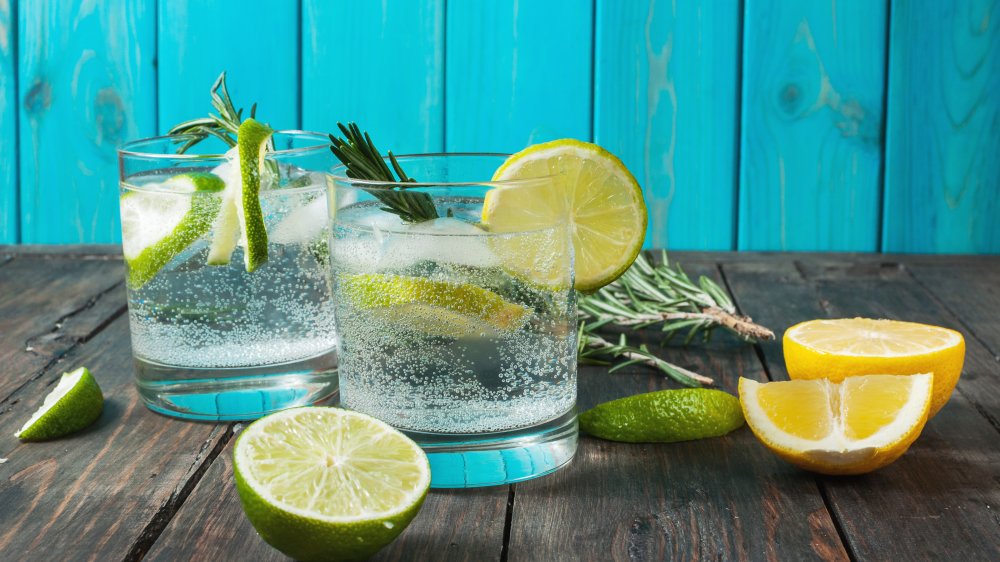The Original Purpose Of Gin And Tonic Will Surprise You
Avid mixologists and imbibers love their cocktail of choice for different reasons. Maybe it's the balance of the bitters with sweet notes, or perhaps they love a classic for the kind of spirit it showcases. But if there is one drink that should win over the hearts of those who love history, it is none other than the gin and tonic.
The juniper-forward liquor has come a long way since it was first invented in the 17th century by the Dutch. But when the British discovered "Dutch courage" during the Thirty Years War, the soldiers brought it back to London. Of course, the spirit spread incredibly fast and by 1720, many households in the city were making their own gin. By 1857, Great Britain had control of India, and there were laws that prevented the production of low-quality gin. So the Brits had really come to love the incredibly popular liquor and took it with them while they colonized India (via Flaviar).
Gin was actually medicinal
In India, malaria was an issue. At the time, cinchona bark was a popular treatment and preventative medicine for the disease in Europe. You might even recognize the bark's active ingredient if you've read your tonic water bottle closely. It's actually quinine (via Advanced Mixology).
Quinine powder had been hard to stomach due to its bitter taste, but by mixing it with sugar water, it became an easy way to take a daily dose of the medicine. As tonic water became popular, Brits soon realized it could be consumed with gin as a practical measure, according to Advanced Mixology. It didn't hurt that the refreshing drink tasted delicious too. The cocktail only needed two ingredients which made it easy and simple to make.
So, the drink really became a preventative health measure to ward away malaria while enjoying a boozy libation at the same time. You'll probably never see your G+T the same way again.

